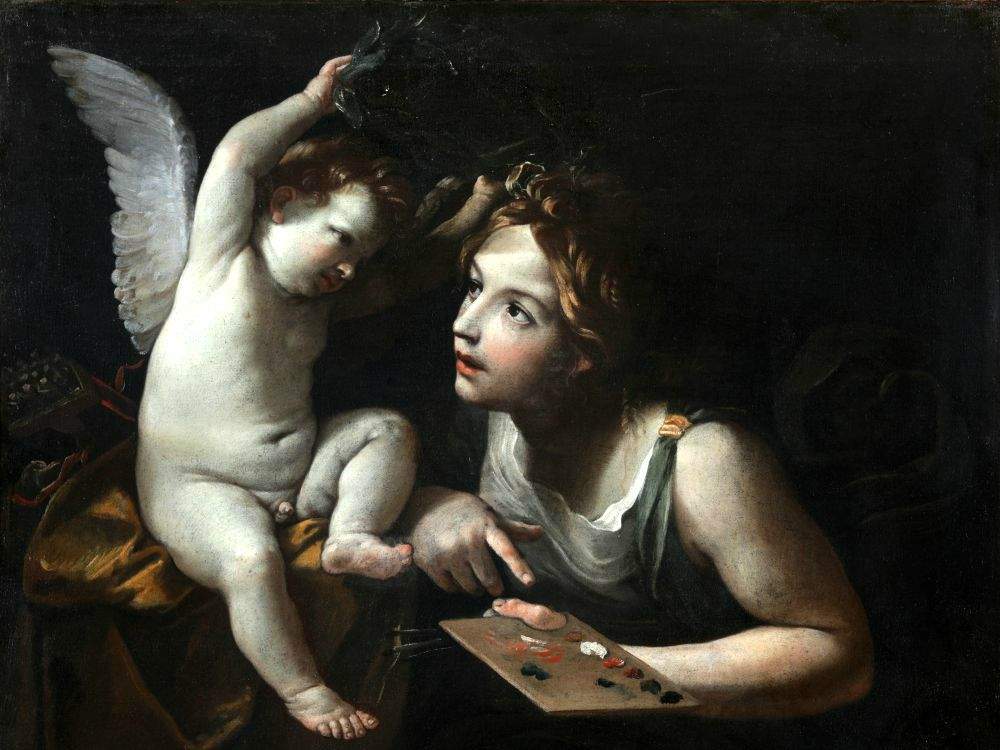From May 9 to October 13, 2019 , the exhibition Reni, Guercino, Cantarini, Pasinelli. Il Seicento Bolognese nelle collezioni della Fondazione Cassa di Risparmio in Bologna, curated by Angelo Mazza. The exhibition presents the public with an itinerary through the art of seventeenth-century Bologna with works from the collection of the Fondazione Cassa di Risparmio in Bologna, which welcome interesting evidence of the production of various protagonists of that season. The most important works are currently on display at the Museum of the History of Bologna in Palazzo Pepoli, but others of no less significance furnish the offices of Casa Saraceni, the Foundation’s headquarters, or are kept in the vaults of other residences entrusted to the Genus Bononiae society. The exhibition displays a selection of these otherwise unseen works.
Space, therefore, is given to paintings by great artists such as Guido Reni (Bologna, 1575 - 1642), to whose last activity we owe Lucretia preparing to commit suicide, or Guercino (Giovanni Francesco Barbieri; Cento, 1591 - Bologna, 1666) with St. Peter Penitent, or Simone Cantarini (Pesaro, 1612 - Verona, 1648), a rebellious pupil of Guido Reni, with a masterpiece of severe naturalism such as the sober Double Portrait of Man with Hat and Woman with Rosary acquired in an American auction. But there will also be no shortage of other pupils of the great master such as Francesco Gessi, Gian Giacomo Sementi and Giovanni Andrea Sirani, father of the celebrated Elisabetta (Bologna, 1638 - 1665), author of Portia injuring her leg and the allegorical Portrait of Anna Maria Ranuzzi with her children in the guise of Charity.
A section of paintings of religious subjects aligns painters sensitive to the teachings of Cardinal Gabriele Paleotti, viz. the devout Giovanni Battista Bertusio (Bologna, 1577 - 1644), a pupil and collaborator of Ludovico Carracci, with a Crucifix, St. Thecla and the patron of the Pellegrini family; Vincenzo Spisanelli (Orta San Giulio, 1595 - Bologna, 1662), a pupil of the Flemish Denys Calvaert, with a Deposition of Christ in the Sepulcher; Girolamo Negri known as Boccia (Bologna, 1648 - 1720) with a large Ecce Homo inspired by thefresco by Ludovico Carracci now in the Oratory of San Filippo Neri, and other artists such as Giovanni Maria Viani, his son Domenico Maria, and finally Marcantonio Franceschini (Bologna, 1648 - 1729), the heir to the purist classicism of Carlo Cignani, who was appreciated by European collectors. Closing the century is the long artistic parabola of Lorenzo Pasinelli (Bologna, 1629 - 1700), represented in the exhibition by a youthful Sibyl and the monochrome with Giulia’s Fainting before her husband’s bloody clothes, a sketch for the large painting in the Pinacoteca Nazionale in Bologna, as well as the luminous canvas with Angelica in love carving Medoro’s name on the tree.
There are also no shortage of portraits (Bartolomeo Cesi, Portrait of Lattanzio Graffi, page of Clement VIII) and paintings with subjects of everyday life (Giovanni Maria Tamburini, Market Scene and Beggars at questua); while the two oval canvases by Giovan Gioseffo Dal Sole (Bologna, 1654 - 1719) with Architectural Perspectives and Figures, one of which has a signature, document a genre of painting in which Bolognese artists would gain primacy in Europe thanks to the Bibiena set designs.
The exhibition opens Tuesday through Friday from 3 to 6 p.m., Saturdays, Sundays and holidays from 10 a.m. to 6 p.m. Closed Mondays and Aug. 3 to 25. For info visit the website of the Fondazione Cassa di Risparmio in Bologna.
Pictured: Francesco Gessi, Allegory of Painting.
Source: press release
 |
| Guido Reni, Guercino and the unseen seventeenth century in Bologna exhibition |
Warning: the translation into English of the original Italian article was created using automatic tools. We undertake to review all articles, but we do not guarantee the total absence of inaccuracies in the translation due to the program. You can find the original by clicking on the ITA button. If you find any mistake,please contact us.